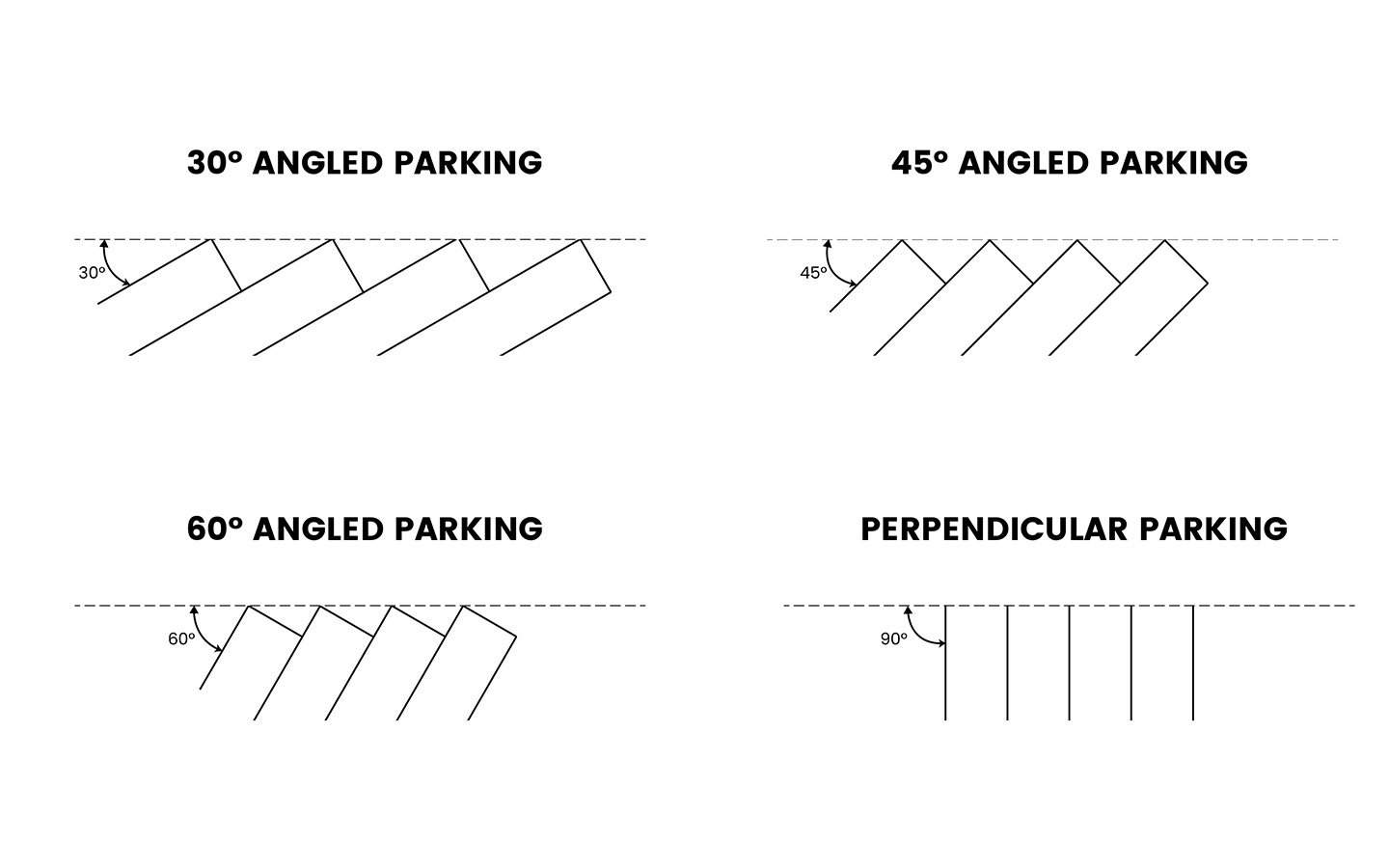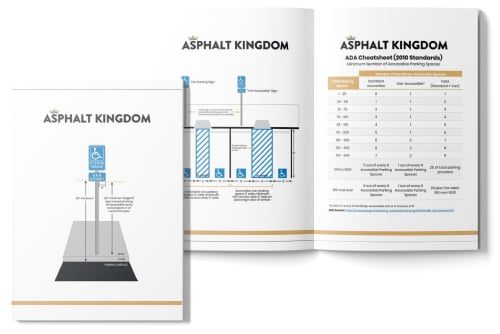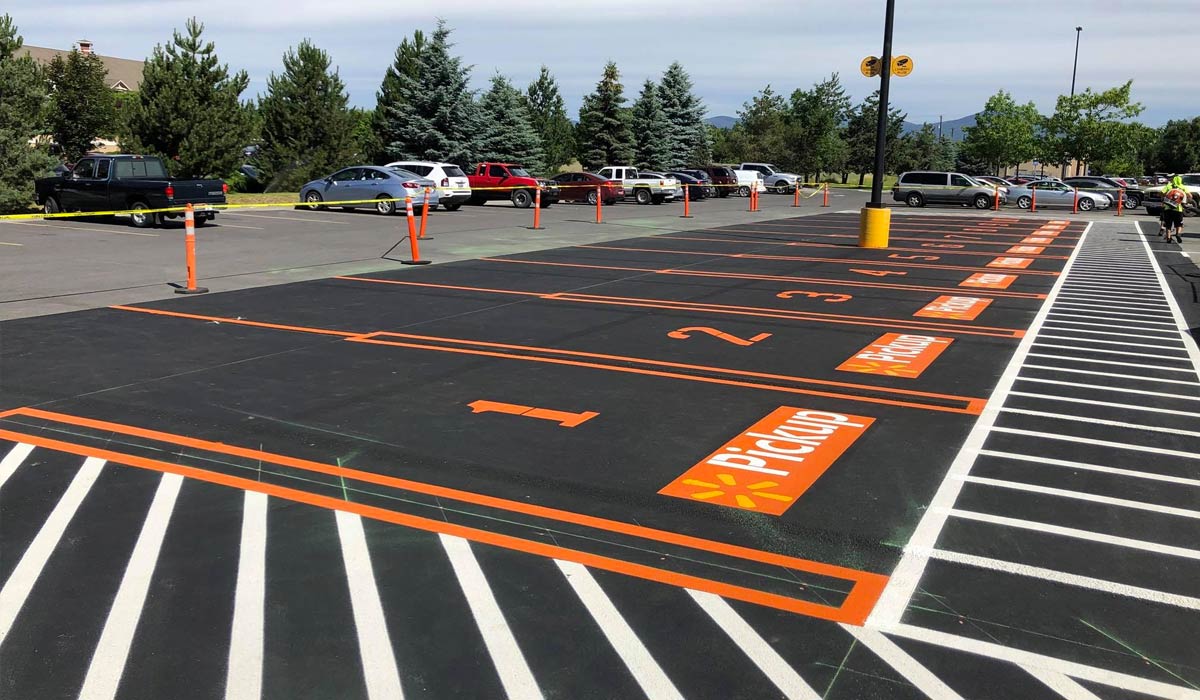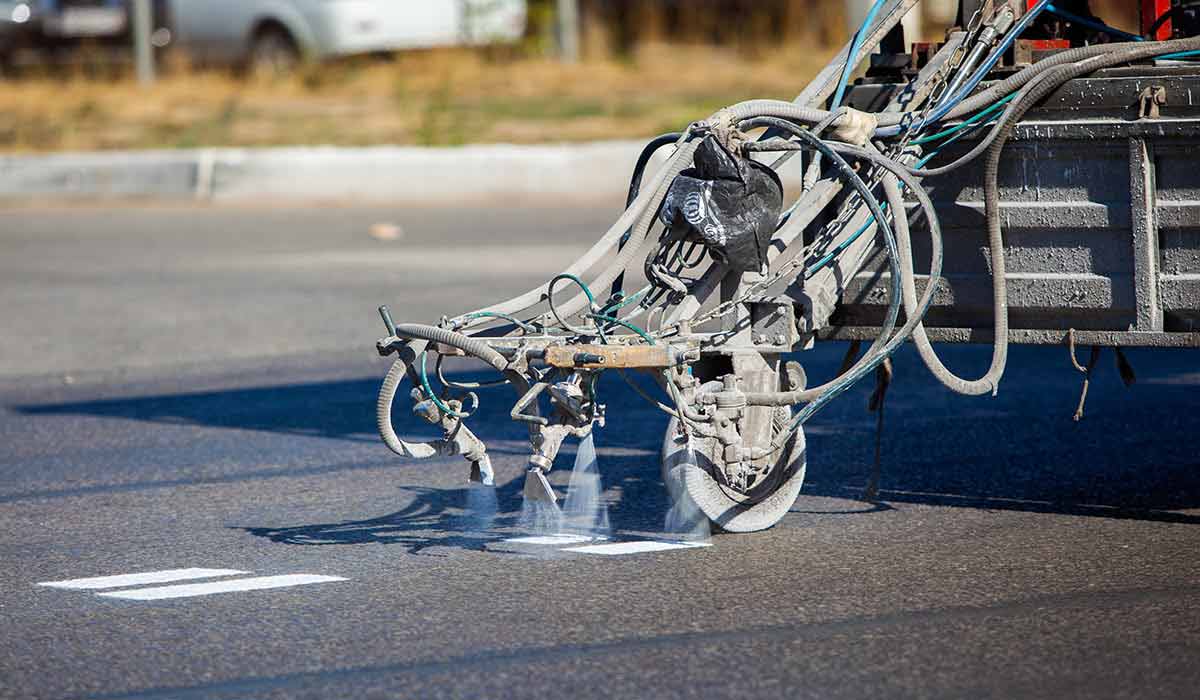Thinking about repainting your parking lot lines? It’s one of the simplest ways to breathe new life into an aging parking lot. It’s also one of the more affordable parking lot maintenance options, and one that you can do yourself if you have the time and the right line striping equipment. However, line striping does require that you know the laws that cover parking space dimensions in your area.
Standard Parking Space Size
Whether you’re restriping an existing parking lot or repainting faded parking space lines, you’ll need to follow the standard parking space size as defined by your local laws. There’s no one-size-fits-all measurement, either.
- North American parking spaces range from 8.5 to 9 feet wide by 18 feet long.
You’ll also need to make sure that the aisles between rows of parking spaces are sized appropriately.
- North American parking lot aisles are usually 14 feet (one-way aisles) to 24 feet (two-way aisles).
In some cases, parking lot spaces are angled. In others, they are parallel to the parking lot aisle. Parking space angle relative to the curb varies a lot from one property to another, and can be:
- 30º
- 45º
- 60º
- 90º
Related: What to Consider When You Paint Parking Lot Areas
Traffic Flow and Volume
You’ll need to lay out your parking lot appropriately to handle the flow and volume of traffic that you expect. One-way and two-way lanes help you do that. With a standard one-way aisle, you have a little flexibility and can make the aisle thinner than a two-way aisle, although there are situations where you may need a wider aisle, like the angle of the parking spaces. A standard two-way aisle will be no narrower than about 20 feet.

What to Know about Angle
Parking space dimensions will hinge on the angle of the space to the curb. This will also affect the width of your aisle. Narrower angles lend themselves to narrower aisles, because vehicles need less space to move into and out of the parking spaces. The wider the angle (the closer to 90º), the wider the aisle will need to be for the same reason.

Parallel Parking Space Dimensions
While most parking spaces are angled away from the curb, some are parallel to it. The standard parking space size for a parallel parking place is 22 feet long and 8.5 feet wide. With that said, your local laws may require different dimensions, so know what applies to you before you start line striping.
Accommodating Larger Vehicles
The standard parking space size is designed to accommodate basic passenger vehicles (cars, pickup trucks, and minivans). However, if you expect to handle larger vehicles, like RVs or semi trucks, you’ll need to adjust your line striping strategy. For instance, a truck parking spaces range from 12 to 14 feet wide and 40 feet to 60 feet long. Again, local regulations will take precedence, so know what laws apply to you.
Handicap Accessibility Considerations
All properties in the US have to adhere to national accessibility standards. That means you need the right number of handicap-accessible parking spaces, as well as the right signage. Handicap-accessible parking spaces should be at least 14 feet wide.
Related: ADA Handicap Parking Requirements & Cheat Sheet
Starter Stencil Kit
If you're starting your own line striping or asphalt sealcoating business, this starter stencil kit is just the thing you need to get started. It covers the necessary basics with a 48" handicap stencil, which is necessary for working on parking lots. You also get a 42" arrow combo stencil, allowing you to paint curved or straight lines to direct drivers. The included word stencils also allow you to mark off special parking and no parking areas.
Paving and Line Striping with Confidence
The golden rule when it comes to standard parking space dimensions is to check your local laws and regulations. Need more information about line striping? Get our free email guide! You can also sign up for the Asphalt Kingdom Build Your Own Business Blueprint at no cost.
 |
 |
Have your own maintenance company and want to earn more money by getting into line striping? The opportunity is there!
Learn more about line striping with our free Line Striping email guide. If you also want a more in-depth guide to line striping and other asphalt maintenance services, then visit the Asphalt Kingdom Build Your Own Business Blueprint and sign up. It's 100% FREE, and you can refer to it again and again as go through the journey of running your asphalt maintenance business.
FREE DOWNLOAD!

Get Your FREE Printable Cheat Sheet









